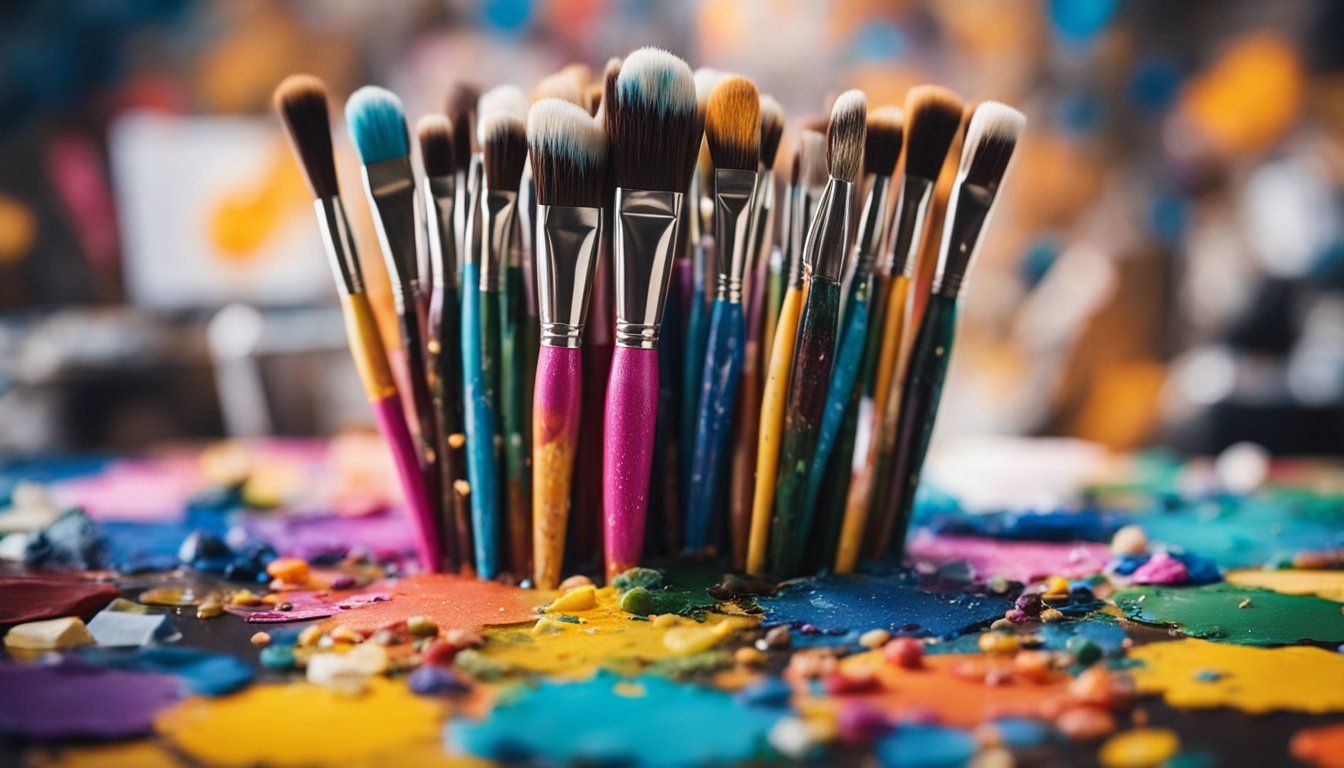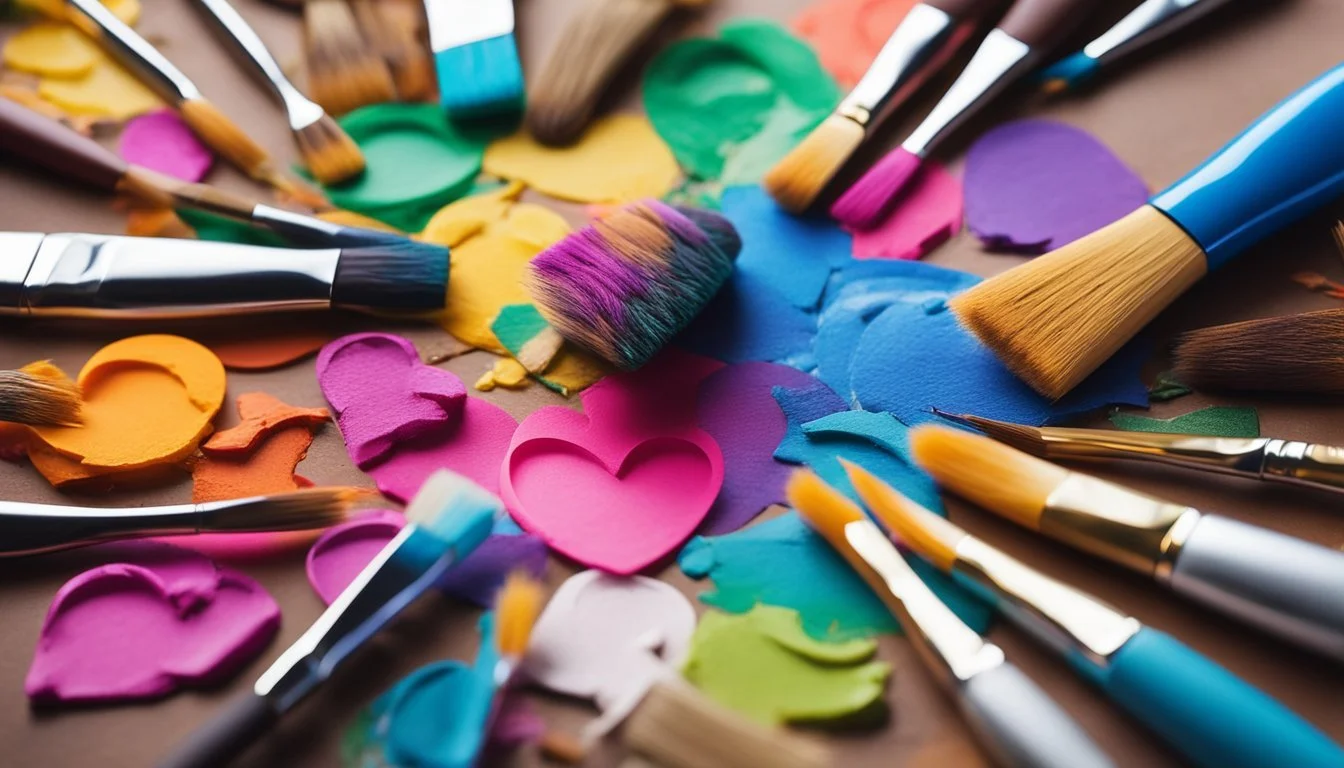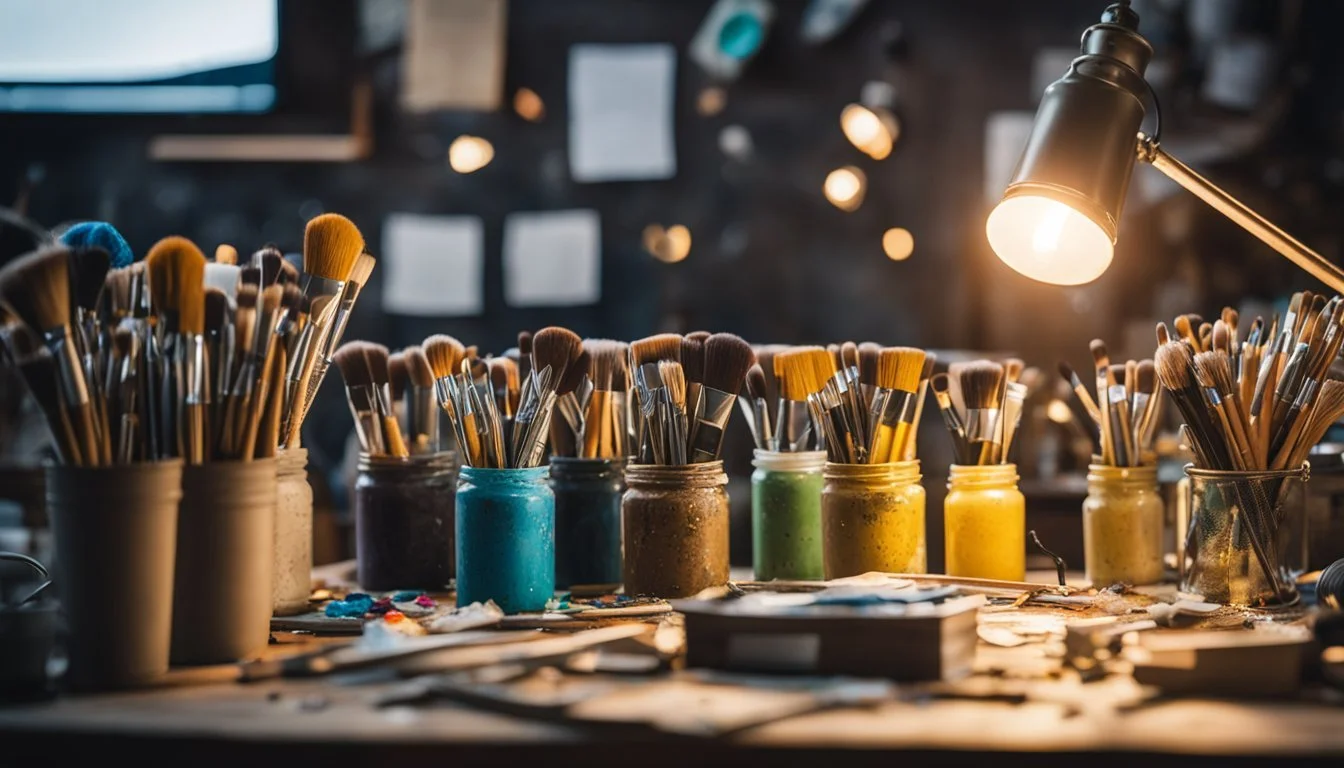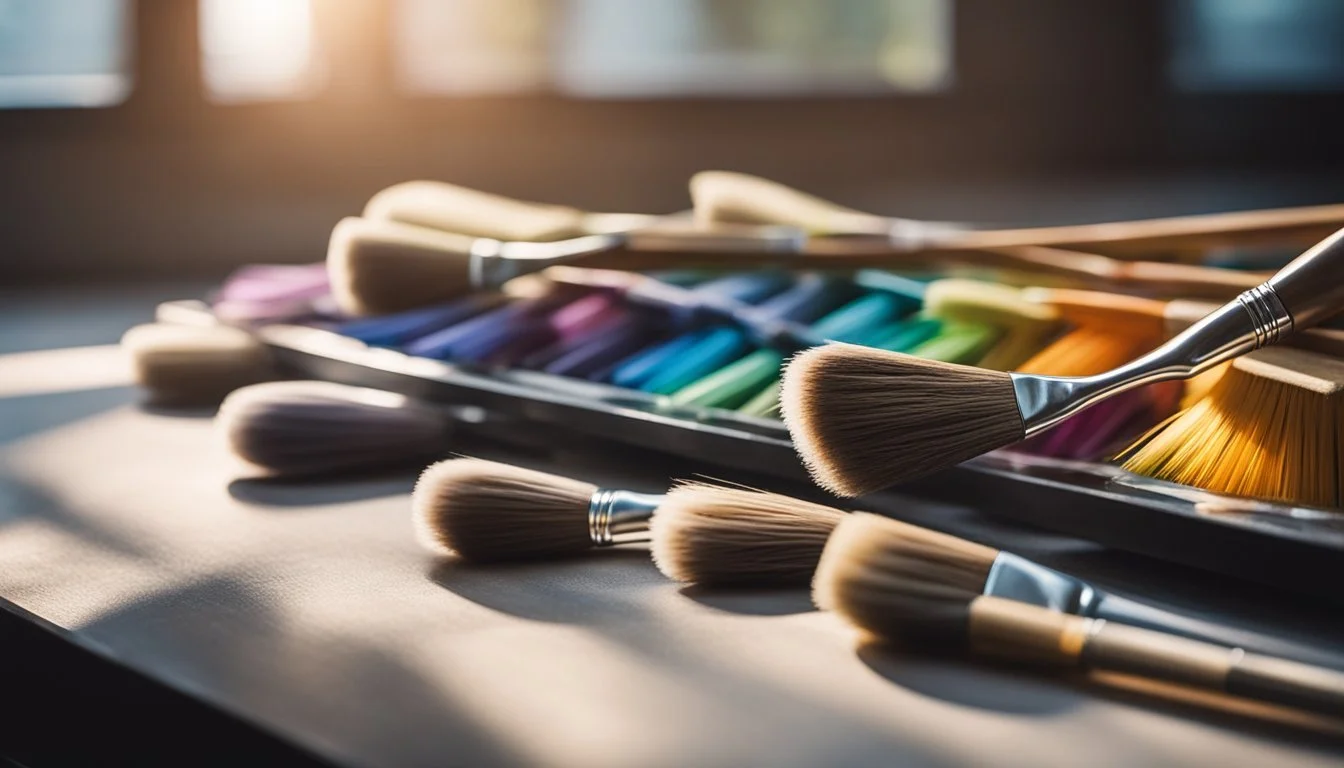8 Documentaries That Investigate the Influence of Love on Creativity
Exploring Art's Emotional Catalyst
Documentaries exploring the intersection of love and creativity offer unique insights into the human experience. These films capture raw emotions and showcase how relationships can spark artistic inspiration. They provide viewers with a window into the complexities of romance and its impact on the creative process.
Love's influence on art and innovation is a powerful force that can lead to groundbreaking works across various mediums. Through intimate portraits of artists, musicians, writers, and other creatives, these documentaries reveal the transformative power of love. They demonstrate how personal connections can fuel artistic expression and push individuals to new heights of creativity.
1) The Creative Brain (Netflix) (2019)
The Creative Brain explores the fascinating world of human creativity through the lens of neuroscience. Hosted by renowned neuroscientist David Eagleman, this documentary delves into the inner workings of the creative mind.
Eagleman interviews various innovators and artists, uncovering insights into their creative processes. The film showcases how different fields, from architecture to music, tap into creative thinking.
The documentary examines the science behind inspiration and innovation. It explores how the brain generates new ideas and connects seemingly unrelated concepts. Viewers learn about techniques to enhance their own creative potential.
Through engaging visuals and expert commentary, The Creative Brain offers a unique perspective on human ingenuity. It demonstrates how creativity is not limited to artists but is essential in all aspects of life and problem-solving.
More information about The Creative Brain
2) Helvetica (Gary Hustwit)
Gary Hustwit's documentary "Helvetica" (2007) explores the iconic typeface and its impact on visual culture. The film delves into the history and widespread use of Helvetica in design and advertising.
Hustwit interviews renowned designers and typographers, showcasing their perspectives on the typeface's influence. The documentary examines how Helvetica shapes urban spaces and communication in major cities around the world.
"Helvetica" is part of Hustwit's design trilogy, which investigates elements of contemporary design. The film premiered at the South by Southwest Film Festival in 2007 and gained widespread recognition.
The documentary sparked interest in graphic design careers among young viewers. It highlights the human stories behind font creation and challenges viewers to reconsider everyday typography.
"Helvetica" offers a unique exploration of design, advertising, psychology, and communication through the lens of a single typeface. The film's engaging approach transforms viewers' perspectives on the visual elements that surround us daily.
More information about Helvetica (2007)
3) Cutie and the Boxer (Zachary Heinzerling) [2013]
Zachary Heinzerling's documentary explores the complex relationship between two artists, Ushio and Noriko Shinohara. The film delves into their 40-year marriage and creative partnership.
Ushio, known for his boxing painting technique, takes center stage in the art world. Noriko, despite her own artistic talents, often finds herself in her husband's shadow.
The documentary captures the couple's daily life, showcasing their creative processes and the challenges they face. It reveals how their love and art intertwine, sometimes harmoniously and other times contentiously.
Heinzerling's intimate portrayal earned him the Best Director Award at the Sundance Film Festival. The film provides a candid look at the sacrifices and compromises inherent in a long-term artistic partnership.
"Cutie and the Boxer" offers a nuanced examination of how love can both inspire and complicate artistic expression. It highlights the enduring nature of creativity and passion in the face of life's obstacles.
4) Abstract: The Art of Design (Netflix)
Abstract: The Art of Design (2017) is a Netflix original documentary series that explores the creative processes of innovative designers across various disciplines. Each episode focuses on a different designer, offering insights into their work and inspirations.
The series features renowned figures such as illustrator Christoph Niemann, Nike shoe designer Tinker Hatfield, and architect Bjarke Ingels. It delves into how design influences everyday life, from graphic design to urban planning.
Viewers gain a deeper understanding of the intersection between creativity and practicality. The show emphasizes how love for one's craft drives innovation and problem-solving in design.
Abstract: The Art of Design received critical acclaim for its visually striking presentation. It earned an Emmy nomination for Outstanding Graphic Design and Art Direction, showcasing its commitment to visual excellence.
The series spans two seasons, allowing for an in-depth exploration of multiple design fields. It demonstrates how passion and dedication can lead to groundbreaking solutions in various industries.
More information on Abstract: The Art of Design
5) The Universe of Keith Haring (Christina Clausen)
Christina Clausen's 2008 documentary explores the life and work of iconic pop artist Keith Haring. The film uses archival footage and interviews with notable figures to paint a vivid portrait of Haring's artistic journey.
Clausen chronicles Haring's rise to fame in the 1980s New York art scene. The documentary showcases his distinctive style and its impact on popular culture.
Interviews with Madonna, Yoko Ono, and other contemporaries provide personal insights into Haring's character and creative process. The film also examines how Haring's sexuality and the AIDS crisis influenced his art.
The Universe of Keith Haring highlights the artist's prolific output and his commitment to making art accessible to the public. It documents his subway drawings, large-scale murals, and collaborations with other artists.
Clausen's film serves as a celebration of Haring's enduring legacy and his unique vision that continues to inspire artists today.
More information on The Universe of Keith Haring
6) Every Picture Tells a Story (James Runcie)
James Runcie's documentary "Every Picture Tells a Story" (1985) explores the life and work of Irish painter William Scott. The film offers a unique perspective on Scott's artistic journey and the influence of love on his creative process.
Runcie, a British novelist and filmmaker, crafts a compelling narrative that blends dramatized scenes with documentary elements. The film stars Natasha Richardson as art teacher Kathleen Bridle and John Docherty as William Scott.
The documentary delves into Scott's relationships and how they shaped his artistic vision. It examines the painter's deep connection to his Irish roots and the impact of his personal experiences on his work.
Runcie's approach to storytelling in this film provides viewers with a nuanced understanding of Scott's artistic development. The documentary showcases how love and personal connections can fuel creative expression.
"Every Picture Tells a Story" stands as a testament to the power of visual storytelling in exploring the intersection of art and emotion. It offers valuable insights into the life of a significant 20th-century painter.
More information on William Scott
7) Finding Vivian Maier (John Maloof, Charlie Siskel) (2013)
This documentary explores the life and work of Vivian Maier, a nanny who secretly took over 100,000 photographs throughout her lifetime. The film uncovers the mystery surrounding Maier's hidden talent and her reasons for keeping it concealed.
John Maloof, a Chicago historian, stumbled upon Maier's photographs at a local auction. Intrigued by the quality of her work, he embarked on a journey to piece together her story and bring her art to light.
The documentary delves into Maier's complex personality and her relationships with the families she worked for. It reveals how her passion for photography intertwined with her daily life as a caregiver.
Through interviews with those who knew Maier and analysis of her vast collection of images, the film paints a portrait of an enigmatic artist whose work remained undiscovered until after her death.
Finding Vivian Maier raises questions about the nature of art, privacy, and the impact of recognition on an artist's legacy. It showcases Maier's remarkable talent and her unique perspective on mid-20th century American life.
More information on Finding Vivian Maier
8) David Lynch: The Art Life (Jon Nguyen) (2016)
This documentary explores the early life and artistic journey of filmmaker David Lynch. It focuses on Lynch's formative years and his path to becoming a renowned artist and director.
The film traces Lynch's upbringing in various American states, including Montana, Washington, Idaho, and Virginia. It delves into his initial move to Philadelphia to pursue a career as a painter.
Lynch shares personal anecdotes and reflections on his creative process. He discusses his dedication to what he terms "the art life" - a lifestyle centered around coffee, cigarettes, and painting.
The documentary provides insight into Lynch's artistic development, leading up to the production of his first feature film, Eraserhead. It offers a unique glimpse into the mind of this enigmatic creator.
Directed by Jon Nguyen, Rick Barnes, and Olivia Neergaard-Holm, the film combines interviews with Lynch and archival footage. It paints a portrait of an artist deeply committed to his craft.
Exploring Love as a Muse
Love has long served as a powerful catalyst for artistic expression and creative endeavors. Its influence on creativity spans centuries and cultures, inspiring countless works of art, music, literature, and film.
Historical Perspectives on Love and Creativity
Throughout history, love has fueled artistic innovation. Ancient Greek poets like Sappho crafted lyrical verses celebrating romantic passion. Renaissance artists such as Botticelli depicted mythological love scenes in vivid paintings. In the Romantic era, composers like Beethoven channeled intense emotions into stirring symphonies.
Shakespeare's sonnets and plays explored love's complexities, while Jane Austen's novels examined societal expectations around romance. Modern artists continue this tradition, with contemporary musicians, filmmakers, and writers drawing inspiration from their own experiences of love and heartbreak.
Psychological Insights into Love-Driven Artistry
Research suggests love activates brain regions associated with motivation and reward, potentially enhancing creative output. The heightened emotional state often leads to increased self-expression and risk-taking in art.
Studies show that being in love can boost divergent thinking and problem-solving skills. This cognitive flexibility may contribute to more innovative artistic approaches. Additionally, the vulnerability and intimacy of romantic relationships can foster greater emotional depth in creative works.
Some psychologists argue that the pain of lost love or unrequited affection can be equally potent muses, driving artists to channel their feelings into their craft as a form of catharsis or self-reflection.
Case Studies of Love's Impact on Art Forms
Love has profoundly shaped creative expression across various artistic disciplines. Its influence can be seen in the vibrant brushstrokes of paintings and the poetic verses of literature.
Visual Arts Transformed by Romantic Inspiration
Pablo Picasso's "Blue Period" emerged from his tumultuous relationship with Fernande Olivier. The artist's melancholic blue-tinted works reflected his emotional state during this time.
Georgia O'Keeffe's floral paintings took on new meaning through her correspondence with Alfred Stieglitz. Their passionate letters inspired her to create bold, sensual depictions of flowers.
Frida Kahlo's self-portraits often incorporated imagery of her husband Diego Rivera. These works explored themes of love, pain, and identity in striking detail.
Literature and the Narrative of Love
Elizabeth Barrett Browning's "Sonnets from the Portuguese" chronicled her courtship with Robert Browning. These poems remain some of the most celebrated love verses in English literature.
F. Scott Fitzgerald drew inspiration from his relationship with Zelda Sayre for "The Great Gatsby". The novel's exploration of love and loss mirrored the author's own experiences.
Gabriel García Márquez's "Love in the Time of Cholera" was inspired by his parents' courtship. The book's rich narrative wove together themes of passion, devotion, and the passage of time.





